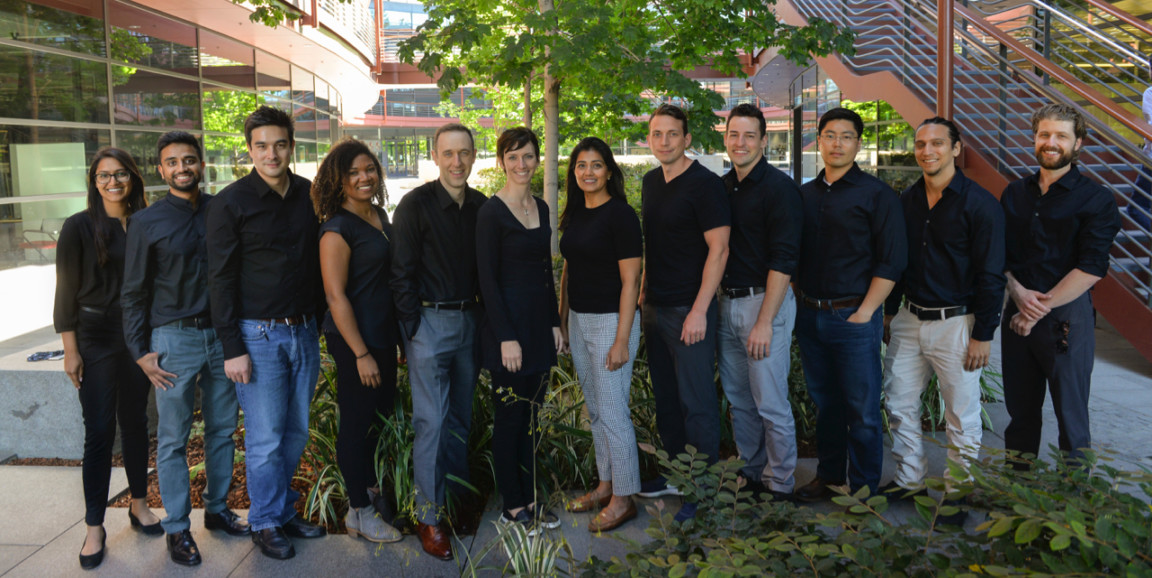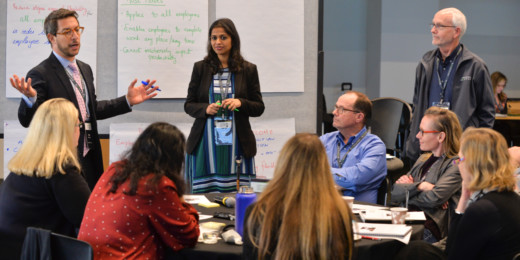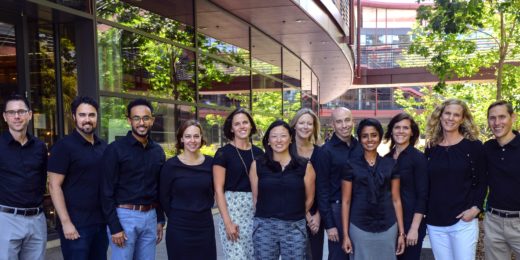Dressed in black, the newest class of Biodesign Innovation Fellows arrived for their first day at the Stanford Byers Center for Biodesign ready for photos (hence the black shirts), and eager to learn the clinical focus area for the year. This is the area of medical practice in which they will concentrate their efforts to find and solve important problems in care through new technology development.
Each year, the clinical focus area is kept secret until the fellows arrive in order to maintain a level playing field. This year it is otolaryngology, or ENT. This broad area includes adult and pediatric hearing loss, ear infections, tinnitus, balance and facial nerve disorders. It also includes diseases of the sinus like sinusitis (a chronic inflammation that is one of the most common health complaints in the U.S.), sleep, facial plastics, and the head and neck endocrine system.
Led by Robert Jackler, MD, a team of more than 15 Stanford Medicine physicians will give lectures to bring the fellows up to speed on everything from basic anatomy and physiology to current areas of research in the field. Robson Capasso, MD, chief of sleep surgery, and otolaryngologist Peter Santa Maria, MD, are leading efforts to coordinate and host the fellows as they spend time in Stanford's hospitals and clinics directly observing the delivery of care.
"I was very happy that it was a surgical sub-specialty, but I was also hesitant because head and neck anatomy is very complex. However, I know that the area lends itself to a lot of creative thinking and is a great space for innovation." said Auriel August, MD, a second year general surgery resident at Stanford, after learning about the focus.
August is one of four women in the 2019-20 Innovation Fellowship class. Six of the fellows are engineers, three are physicians, two hold degrees in both in engineering and medicine, and one holds degrees in medicine and business.
More than the clinical focus is new in the Stanford Biodesign Innovation Fellowship this year. The program has new leadership spearheaded by directors James Wall, MD, and Dan Azagury, MD. And for the first time in many years, all three fellowship teams will concentrate their needs-finding in the same area. In the past, one team looked for problems to solve in the clinical specialty areas of its physician members. "We have found that taking physicians out of their area of expertise and having them look at things with a fresh eye really lends itself to the innovation process," said Azagury.
Fellow Alfred Song, MD, PhD, a second-year Stanford general surgery resident, is eager to learn and implement that process. "I decided to go into medicine after getting my PhD in engineering because I felt that I needed more exposure to the patients for whom I was trying to solve problems. The Stanford Biodesign process begins in the right way -- it starts with the patient and the need, and then figures out a realistic way to solve the problem and deliver that solution to patients."
Photo by Rod Searcey






